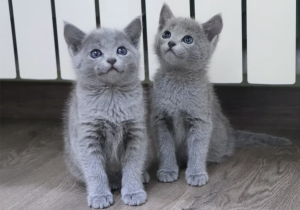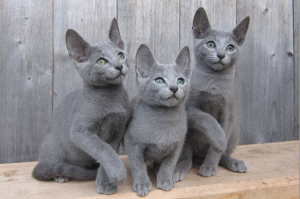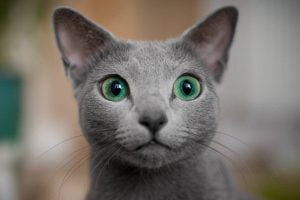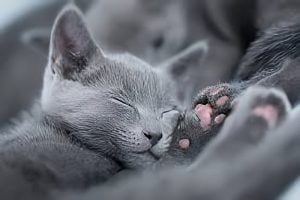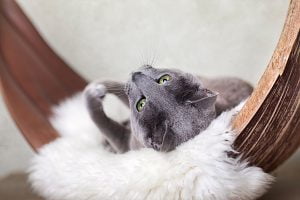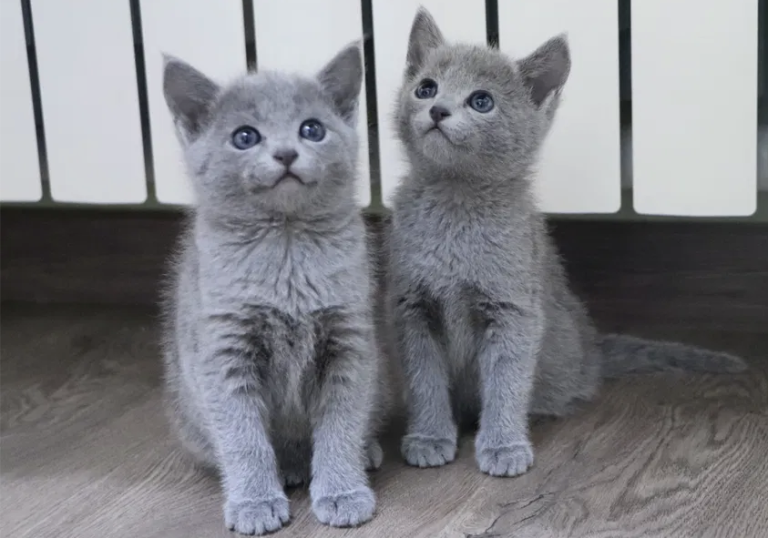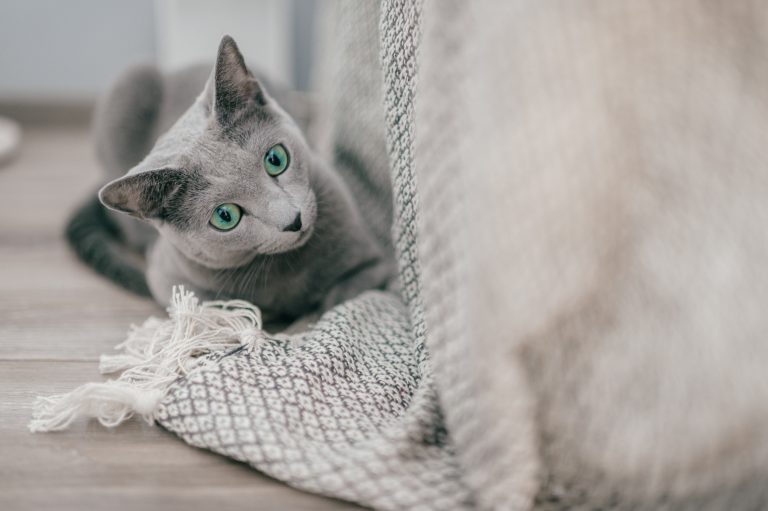Welcome to your guide on one of the most enchanting and intelligent cat breeds – the Russian Blue. Known for their striking blue-grey coats, sparkling green eyes, and gentle yet somewhat reserved nature, Russian Blues have been capturing hearts all around the world. Whether you’re an aspiring Russian Blue owner or just an admirer of this distinctive breed, this article aims to provide you with a comprehensive understanding of these stunning felines.
We will delve into the top ten things you should know about owning a Russian Blue Cat – from their rich history and unique physical characteristics to their temperament and health considerations. We’ll also guide you through their dietary needs, activity levels, grooming necessities, and ideal living environments. Additionally, we’ll explore their learning capability and the significance of early socialization. Finally, we’ll share some valuable insights on finding a responsible breeder.
Join us as we journey through the fascinating world of Russian Blues, gaining a deeper appreciation for their beauty and charm, as well as understanding the responsibilities that come with owning one of these majestic creatures
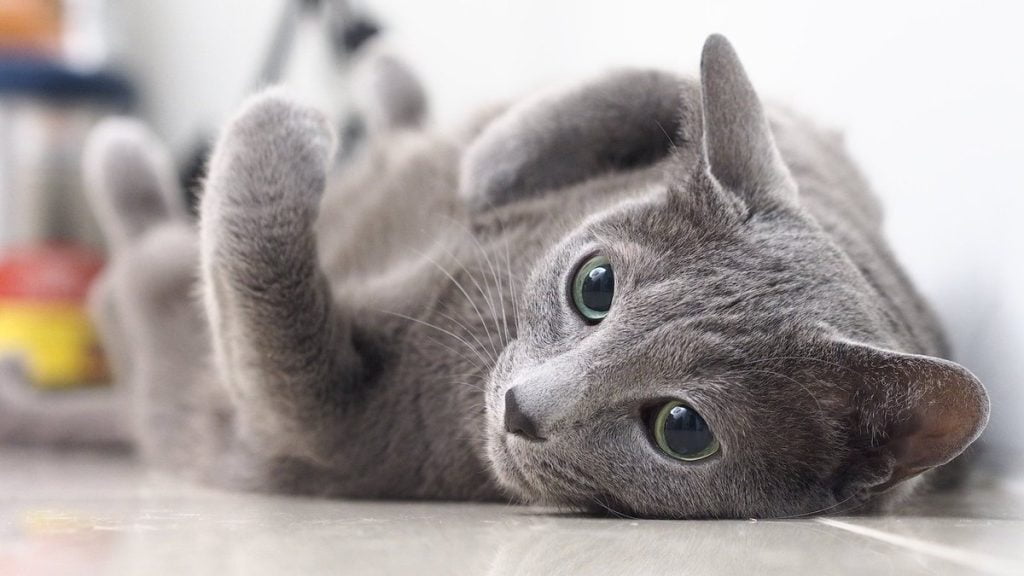
History and Origins of Russian Blue Cats
Embarking on our journey with the Russian Blue cats, it’s essential to begin at their roots. The Russian Blue, as their name suggests, is believed to have originated in Russia. They are a naturally occurring breed, known in their homeland as the ‘Archangel Cat,’ named after the Archangel Isles in northern Russia where they were first discovered. It’s said that these cats were the pets of Russian Czars and royalty, contributing to their noble demeanor.
In the mid-19th century, Russian Blues were brought to Britain by sailors. They quickly gained popularity due to their striking appearance and unique temperament. Initially, they were simply known as ‘Blue’ cats. However, to distinguish them from other blue-coated breeds, the ‘Russian’ was later added, paying homage to their place of origin.
Russian Blues were recognized by The Cat Fanciers’ Association (CFA) in America in 1949, and their popularity has only grown since then. Despite their illustrious history and growing demand, Russian Blues remain a relatively rare breed, which only adds to their mystique and allure.
Rich in history and steeped in mystery, the Russian Blue cats stand out not only for their stunning looks but also for their remarkable origins and the intriguing journey they’ve embarked on.
Keep reading to learn:
✅ Unique Physical Characteristics
✅ Temperament and Personality Traits
✅ Health and Lifespan
Unique Physical Characteristics
The Russian Blue’s exquisite beauty is undeniable and their unique physical characteristics are part of what sets them apart.
Coat
As their name suggests, Russian Blues sport a short, dense coat of a bluish-grey color. This coat has a plush, double-layered texture that stands out from the body, giving them a regal, cloud-like appearance. This unusual coat color can range from a light silvery blue to a darker slate grey.
Eyes
The Russian Blue’s eyes are another striking feature. They are typically large, wide-set, and almond-shaped, glowing with a vivid green color that contrasts beautifully with their blue-grey coat. It is worth noting that kittens are born with yellow eyes, which gradually turn green as they mature.
Facial Structure
Russian Blues have a distinct facial structure characterized by a broad, modified wedge-shaped head with high-set ears, giving them an alert and intelligent expression. Their straight nose is of the same blue as their coat and leads to a strong chin, contributing to their overall dignified look.
Body
The Russian Blue’s body is sleek but muscular, with a graceful form that is neither overly slender nor overly bulky. They possess long, fine-boned legs ending in round paws. Their tail is long and tapering, adding to their elegant silhouette.
Size
Russian Blues are medium-sized cats, with males typically weighing between 10-12 pounds and females between 7-10 pounds.
In all, these unique physical characteristics come together to create a cat that is as visually striking as it is endearing. With their velvety blue coats, enchanting green eyes, and regal bearing, Russian Blues truly are a breed like no other.
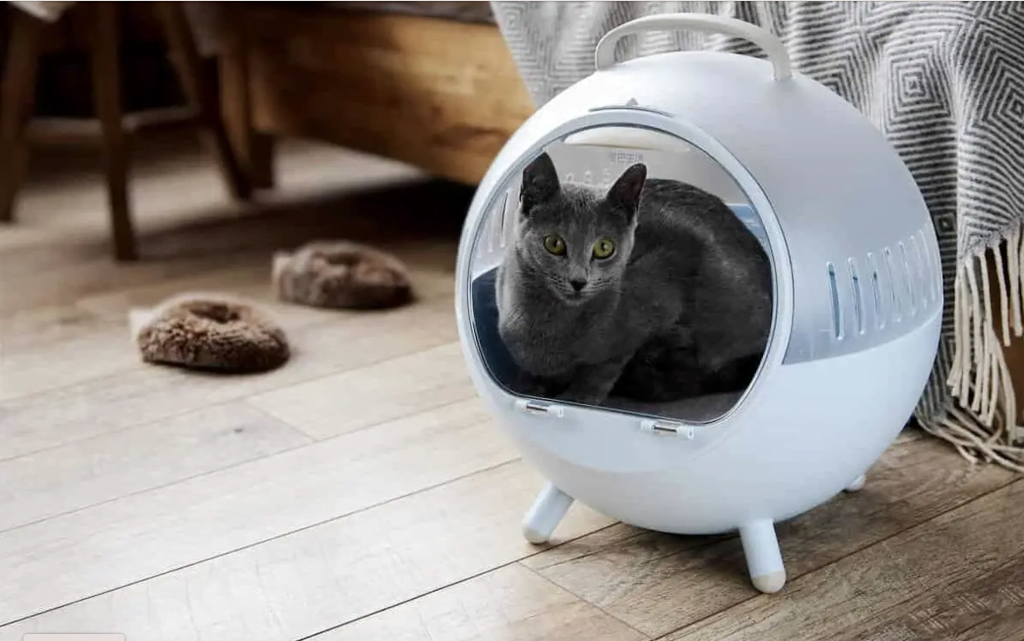
Temperament and Personality Traits
Let’s now turn our focus to the temperament and personality traits of the Russian Blue, which are as distinctive as their physical characteristics. Known for their intelligence, affection, and slightly reserved nature, Russian Blues are a joy to have in any home.
Intelligence
Russian Blues are highly intelligent and curious cats. They have an uncanny ability to problem-solve and will often find ways to get to places you thought were out of reach. This intellectual curiosity, coupled with their keen memory, means they can quickly learn new commands and tricks.
Affectionate yet Reserved
While Russian Blues form deep bonds with their families and can be incredibly affectionate, they are often somewhat reserved, especially with strangers. They typically prefer a quiet and predictable environment and may take time to warm up to new people or changes in their surroundings. However, once they trust you, they show immense loyalty and affection.
Quiet and Gentle
Unlike some more vocal breeds, Russian Blues are generally quiet cats, making them perfect companions for those who prefer a serene and peaceful home environment. They are known for their gentle, polite demeanor and are rarely aggressive.
Playful
Despite their poised and regal appearance, Russian Blues can be quite playful. They enjoy interactive games and toys that challenge their intellect.
Independent
Russian Blues are fairly independent and are more than capable of entertaining themselves when their human companions are busy. However, they do enjoy the company of their loved ones and appreciate being part of daily activities.
In essence, owning a Russian Blue is a rewarding experience. They provide the perfect balance of intelligence, loyalty, and independence, along with an affectionate nature that is sure to warm your heart. Their calm and gentle demeanor make them wonderful companions, providing comfort and companionship in the most elegant way.
Health and Lifespan
As a breed, Russian Blues are generally robust and healthy, contributing to their popularity as pets. This doesn’t mean they’re exempt from potential health issues, but they do have fewer breed-specific problems than many other cat breeds.
Lifespan
On average, a well-cared-for Russian Blue can live between 15 and 20 years, some even longer. This is comparatively longer than many other breeds of cats, making them a long-term companion for any family.
Overall Health
Russian Blues are not known to have any breed-specific genetic disorders. This hardy nature can be attributed to their origins as a naturally occurring breed, which tends to result in a broader gene pool and hence a lower likelihood of inherited health issues.
Weight Management
One potential health issue to be aware of is that Russian Blues do love their food and can become overweight if their diet isn’t properly managed. Obesity can lead to a range of other health problems, including diabetes, heart disease, and arthritis. It’s crucial to maintain a balanced diet for your Russian Blue and ensure they get adequate exercise.
Dental Health
Like all cats, Russian Blues can be prone to dental diseases such as gingivitis and periodontal disease. Regular dental check-ups with your vet and good oral hygiene practices at home can help prevent these issues.
Regular Check-ups
Despite their typically strong health, regular vet check-ups are still essential for your Russian Blue. Routine examinations can catch potential health issues early and keep your cat in its best possible condition.
In conclusion, while Russian Blues are generally a healthy and long-lived breed, they still require conscientious care and regular veterinary check-ups to ensure they lead a long and healthy life. Remember, a healthy cat is a happy cat!
Diet and Nutrition
Diet and nutrition play a vital role in maintaining the health and wellbeing of your Russian Blue. As with any pet, providing them with a balanced diet is key, but there are certain considerations that Russian Blue owners in particular should bear in mind.
Balanced Diet
A Russian Blue’s diet should be balanced and nutritious, containing a good mix of proteins, carbohydrates, and fats. Proteins are especially crucial for this active breed. High-quality cat food brands, whether wet, dry, or a combination of both, that list a source of animal protein as the first ingredient are typically a good choice.
Breed-Specific Feeding Recommendations
While there are no specific dietary restrictions for Russian Blues, it’s essential to avoid overfeeding them. These cats are known for their hearty appetites and can put on weight if not monitored closely.
Meal Portions and Timing
To prevent overeating, consider providing meals in controlled portions rather than free feeding. Also, maintaining a consistent feeding schedule can help regulate your cat’s appetite and weight.
Weight Management
Monitoring your Russian Blue’s weight is crucial. Obesity can lead to numerous health issues, including diabetes and heart disease. Regular weigh-ins can help you keep track of any significant weight changes. If your cat is gaining or losing weight unexpectedly, it’s best to consult a vet.
Hydration
Ensure your Russian Blue has constant access to fresh, clean water, especially if their diet consists mostly of dry food. Keeping them well-hydrated aids in digestion and helps prevent urinary and kidney problems.
Treats and Human Food
Treats should be given sparingly and should never constitute more than 10% of your cat’s daily caloric intake. Avoid giving your cat human food, as some can be harmful to cats.
Remember, the specific dietary needs of your Russian Blue can vary based on their age, weight, activity level, and overall health status. Therefore, it’s always best to consult with your vet before making any significant changes to their diet.
Grooming Needs
Though their thick, plush coat might suggest otherwise, Russian Blues are actually quite low-maintenance when it comes to grooming. This, coupled with their tendency to shed less than many other breeds, makes them an excellent choice for those who want a less demanding grooming regimen for their pet.
Less-Shedding Coat
One of the benefits of owning a Russian Blue is that they are less prone to shedding compared to many other breeds. Their double coat is dense and plush, but it doesn’t shed excessively, particularly outside of the shedding season (usually spring and fall).
Regular Brushing
Despite being a less-shedding breed, Russian Blues still benefit from regular brushing. A weekly brushing session can help remove loose hairs, distribute skin oils, and keep the coat looking its best. Use a brush with soft bristles or a stainless steel comb to avoid damaging their delicate fur.
Bathing
Russian Blues do not require frequent baths, thanks to their dense coat which naturally repels dirt. Only bathe your Russian Blue if they become particularly dirty or if recommended by your vet for specific skin conditions.
Other Grooming Needs
Regular dental hygiene is important to prevent dental disease. Brushing their teeth weekly, or even daily, with cat-specific toothpaste is ideal. Regularly check and clean their ears as needed with a gentle cleanser to prevent infection. Their claws should also be checked and trimmed regularly.
Grooming as Bonding Time
Grooming sessions can be a wonderful opportunity for bonding with your Russian Blue. Many cats come to enjoy being groomed, particularly if you start when they are kittens and handle them gently.
In conclusion, Russian Blues are relatively easy to groom and their beautiful, dense coat does not require high-maintenance care. Regular grooming, however, not only helps keep your Russian Blue looking their best but also gives you a chance to check on their health and spend some quality time with your pet.
Living Environment
Russian Blues are quite adaptable and can thrive in a variety of living situations. However, there are certain environmental conditions that can enhance their comfort and well-being.
Adaptability
Russian Blues can adjust to different living situations, be it a large house or a small apartment. They are indoor cats and should not be allowed to roam freely outside, to protect them from various risks such as traffic, theft, or infectious diseases. They’re also amenable to living with other pets and children, though introductions should be done gradually and respectfully.
Preference for Calm Environments
Russian Blues are known for their reserved and somewhat shy nature. They appreciate a calm, peaceful, and stable environment. Loud noises, large gatherings, or sudden changes in their environment might stress them out. It’s important to provide them with a quiet space where they can retreat and relax.
Vertical Spaces
Russian Blues are agile climbers, and they enjoy having high places to perch and observe their surroundings. Providing vertical spaces such as cat trees or shelves can enrich their environment and offer them a sense of security.
Interactive Elements
While they appreciate their quiet time, Russian Blues are also playful and intelligent. Enrich their environment with stimulating toys, puzzle feeders, and scratching posts to keep them entertained and active.
Consistency
Russian Blues like routine and can be upset by changes in their environment or schedule. Try to keep their feeding, play, and grooming times consistent, and limit changes in their living situation when possible.
In conclusion, while Russian Blues are adaptable, they thrive best in peaceful, stable environments with plenty of stimulation and opportunities for play. Providing this for your Russian Blue will ensure their happiness and well-being.
Training and Socialization
Russian Blues are known for their intelligence and relatively high trainability. They can learn new commands, tricks, and even navigate obstacle courses when trained with positive reinforcement. Early socialization is also crucial in shaping their behavior and ensuring they grow into well-adjusted adult cats.
Learning Capability
Russian Blues are one of the more intelligent cat breeds. They have the ability to learn new commands quickly, and can even learn to fetch, open doors, or play with puzzle toys. They’re also known to be excellent problem solvers.
Trainability
Given their intelligence and desire to please their owners, Russian Blues can be quite trainable. Remember to always use positive reinforcement methods like treats, praise, or petting. Harsh methods can scare your cat and make future training more difficult.
Early Socialization
Russian Blues tend to be a bit shy and reserved, especially with strangers. Therefore, early socialization is important. Expose your kitten to different people, pets, and experiences to help them become more confident and sociable. However, always ensure that these interactions are positive and not overwhelming for your kitten.
Litter Training
Russian Blues are usually easy to litter train as kittens. They prefer a clean litter box, so make sure to scoop daily and fully change the litter regularly.
Behavioral Training
Russian Blues can be trained to avoid unwanted behaviors like scratching furniture or jumping on counters. Use deterrents for unwanted behavior and reward desired behavior.
In conclusion, Russian Blues are intelligent and trainable cats that benefit from early and ongoing socialization. Their intelligence not only makes them entertaining companions but also capable learners who can quickly understand and respond to various commands and training techniques.
Finding a Responsible Breeder
Getting a Russian Blue from a responsible and reputable breeder is crucial to ensure your future pet is healthy and well-socialized. Here are some tips to guide you through the process:
Do Your Research
Start by researching reputable breeders. Look for breeders who are recognized by cat breeding associations. You can also visit cat shows or speak to breed associations for recommendations.
Visit the Breeder
Once you’ve found potential breeders, arrange a visit to the cattery. A responsible breeder will welcome your visit. This allows you to observe the conditions the kittens are raised in, meet the parent cats, and see how the kittens interact with their siblings and people.
Ask Questions
Don’t be afraid to ask the breeder lots of questions. Ask about the health of the parent cats, any genetic diseases in the lineage, how the kittens are socialized, and the diet they are on. A responsible breeder should be knowledgeable about the breed and willing to answer all your queries.
Health Guarantees
Reputable breeders will provide a health guarantee for their kittens. This usually means that the breeder has had the kittens vet-checked and they are free of genetic diseases.
Wait for the Right Age
Kittens should not leave their mother and siblings until they are at least 12 weeks old. They learn crucial social skills during this time that are important for their development.
Registration and Pedigree
A responsible breeder should provide registration papers and a pedigree for your kitten, proving they are a purebred Russian Blue.
Aftercare
Good breeders will offer advice and support even after you’ve taken your kitten home. They should be interested in the welfare of the cats they breed throughout their lives.
Remember, a good breeder’s priority is the health and wellbeing of their cats, and they will want to ensure their kittens are going to a good home. Be prepared for them to ask you questions too. In the end, taking the time to find a responsible breeder can help ensure that you’re bringing home a healthy, well-adjusted Russian Blue kitten.
Ready to welcome a charming Russian Blue into your life? Don’t wait! Visit Via Emilia Cattery today and meet your future feline family member. Click here to embark on this exciting journey now!

